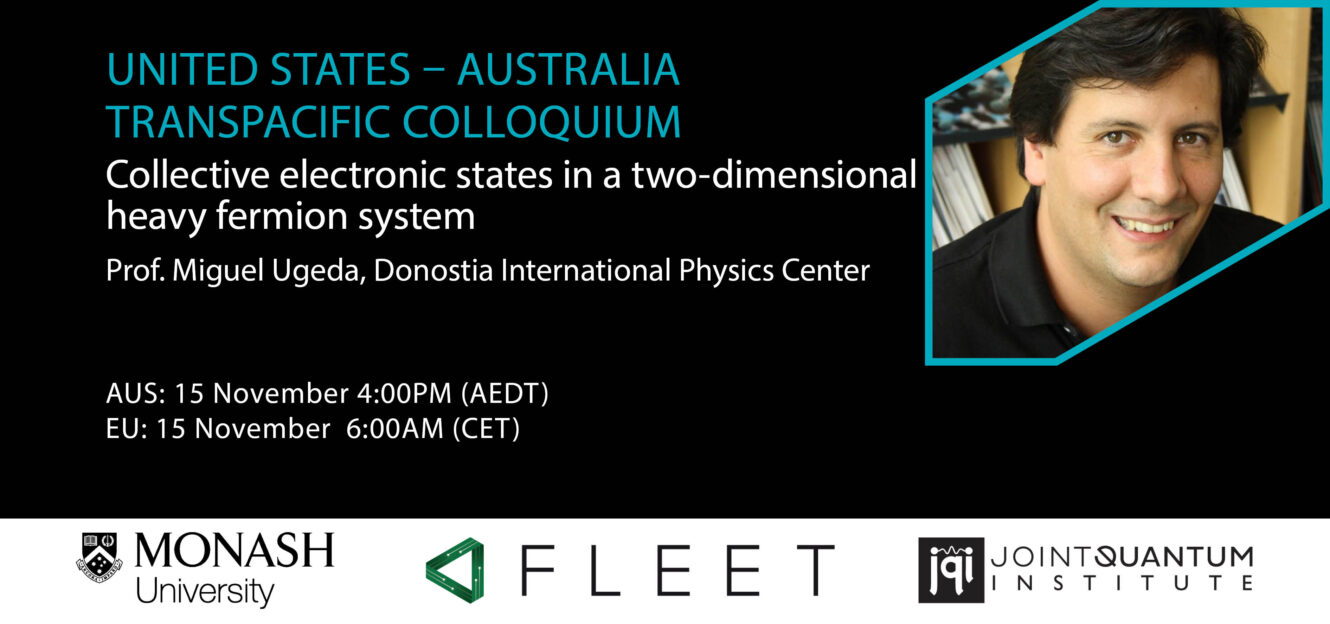-
15 Nov 2023
4:00 pm - 5:00 pm
Prof. Miguel M. Ugeda, Donostia International Physics Center, Spain
Lowering the dimensionality of a material is an effective strategy to boost many-body correlations that fail to be captured by conventional pictures. In this arena, two-dimensional (2D) materials provide an ideal platform for the exploration of quantum collective phenomena arising from such strong interactions due to their simple synthesis and modelling. In this talk, I will review the rich physics that emerges in the family of transition metal dichalcogenide (TMD) metals when two layers of the T- and H- polytypes are vertically stacked. This simple heterostructure serves as an artificial 2D Kondo lattice platform, where strong electron correlations play a dominant role.
First, I will discuss the electronic structure of the two isolated building blocks in the prototypical TaSe2, which we probe via scanning tunneling microscopy/spectroscopy (STM/STS) at low temperatures (340 mK). While the 1T-TaSe2 layer hosts a 2D array of local magnetic moments, the 1H-TaSe2 behaves as a normal metal, acting as a reservoir of conduction electrons [1].
When stacked together, our STM/STS measurements provide evidence for a coherent ground state of the spin lattice in the 1T/1H-TaSe2 heterobilayer [1], as indicated by the presence of two symmetric electronic resonances around the Fermi energy. This hallmark of coherence within the spin lattice is distinct from the well-studied isolated-moment Kondo physics. Furthermore, the evolution of this electronic feature with the magnetic field reveals a non-linear increase of the energy separation between the resonances. Unexpectedly, our observations in this system are only compatible with long-range antiferromagnetic order driven by indirect RKKY interactions and, more importantly, it does not condense into a Kondo insulator state as is commonly assumed for this type of heterostructures.
These TMD heterobilayers open up an exciting avenue for the exploration of quantum criticality, Kondo breakdown transitions, non-Fermi liquid behavior and unconventional superconductivity.
Prof. Ugeda’s research group focuses on the unusual collective electronic phenomena arising in novel low dimensional materials. In their laboratory, they grow these materials via molecular beam epitaxy (MBE) and investigate their properties using a variety of techniques including scanning probe microscopy (STM and AFM) and electron transport measurements, XPS, ARPES, and Raman spectroscopy.

